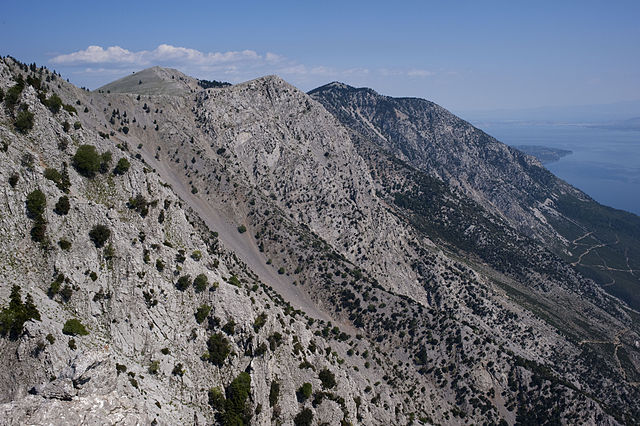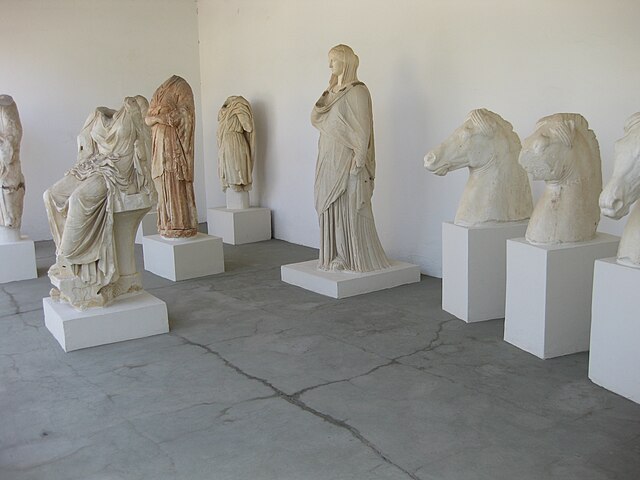Eretria is a town in Euboea, Greece, facing the coast of Attica across the narrow South Euboean Gulf. It was an important Greek polis in the 6th and 5th century BC, mentioned by many famous writers and actively involved in significant historical events.
The ancient theatre with the gymnasion
Plan of the site
Statue of a youth found in the gymnasium, now in the National Archaeological Museum in Athens
Coin of Eretria, 500–490 BC. Silver obol. Obverse: Facing head of cow. Reverse: Octopus in incuse square.
Euboea, also known by its modern spelling Evia, is the second-largest Greek island in area and population, after Crete, and the sixth largest island in the Mediterranean Sea. It is separated from Boeotia in mainland Greece by the narrow Euripus Strait. In general outline it is a long and narrow island; it is about 180 km (110 mi) long, and varies in breadth from 50 km (31 mi) to 6 km (3.7 mi). Its geographic orientation is from northwest to southeast, and it is traversed throughout its length by a mountain range, which forms part of the chain that bounds Thessaly on the east, and is continued south of Euboia in the lofty islands of Andros, Tinos and Mykonos.
NASA picture of Central Greece with Euboea lying to the right
Landscape near Eretria
View of Kantili mountain.
Exhibits in the archaeological museum of Chalcis.








